Renaissance to Goya: Prints and Drawings from Spain, British Museum | reviews, news & interviews
Renaissance to Goya: Prints and Drawings from Spain, British Museum
Renaissance to Goya: Prints and Drawings from Spain, British Museum
Intriguing new light is shone on sketching from Spain's golden age
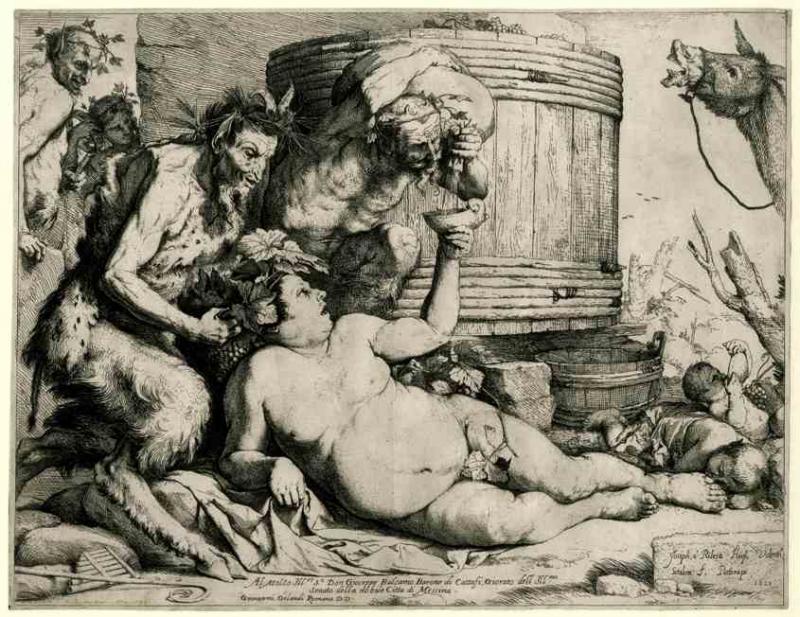
Alonso Berruguete, Vicente Carducho, Juan Antonio Conchillos y Falco and Pedro Machuca are hardly familiar names in the Anglophone art world, but their drawings are on view in a revelatory exhibition. The British Museum is showing nearly all its Spanish drawings and a fine, succinct collection of prints, in an anthology called From the Renaissance to Goya.
It makes for a particularly piquant sequel – or rather, prequel - to the high art of that temperamental genius, the Spaniard Picasso, whose Vollard Suite has just been on view. The milestones it encompasses are various. There was the building of the Escorial, monastery and burial place, outside Madrid by Philip II in the 1560s (in which decade Madrid was designated the Spanish capital). Royalty commissioned artists to design triumphs and processions, while the church asked for murals and altarpieces. Seville meanwhile produced not only Velázquez, who made his fortune and achieved his elevated, decorated status as the artist courtier in Madrid, but also Murillo and Zurbarán, and wealthy Valencia commissioned many an artist. Murillo would establish an academy of drawing in Seville in 1660, while the foundation of the Academy of San Fernando in Madrid in 1744 ensured a national standard of academic training. Artists were also imported to energise the native school, among them the Tiepolos, father and two sons.
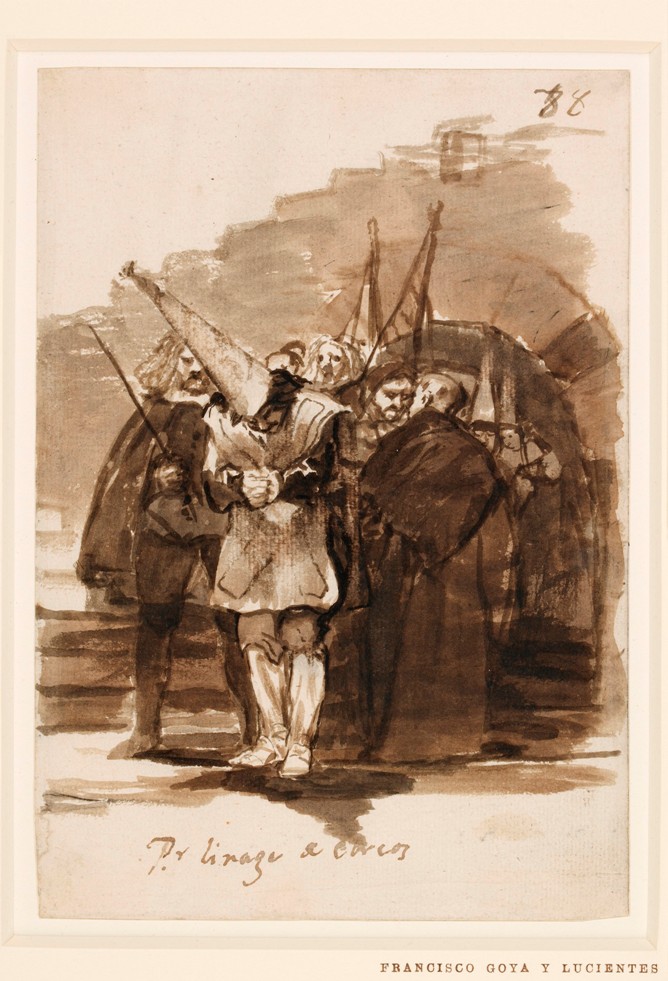 Long before tourists began invading the Costa del Sol there was a group of English connoisseurs of Spanish art. Although it was a peculiarly savage way of discovering Spain, the horrors of the Peninsula Wars brought Spanish art to Britain via the Duke of Wellington and others, and of course inspired the Goya to his terrible excoriating images in the magnificent series of prints, The Disasters of War. In the later nineteenth century British private collectors ensured that the British Museum had some hundred or more drawings and, in the twentieth century, thousands of prints.
Long before tourists began invading the Costa del Sol there was a group of English connoisseurs of Spanish art. Although it was a peculiarly savage way of discovering Spain, the horrors of the Peninsula Wars brought Spanish art to Britain via the Duke of Wellington and others, and of course inspired the Goya to his terrible excoriating images in the magnificent series of prints, The Disasters of War. In the later nineteenth century British private collectors ensured that the British Museum had some hundred or more drawings and, in the twentieth century, thousands of prints.
Britain has a handful of outstanding Spanish paintings in its collections, and there have been some eye-opening Spanish exhibitions, but there has never been an overview of works on paper. Indeed, there was a quiet consensus that there was not much worth looking at. So this array of saints, religious tableaux, the gods of myth and some secular portraits makes visible a tradition we did not even know existed.
There is only one Velázquez drawing on view, a spirited sketch of a mounted horse rearing above a riderless horse just turning away, both achieved in just a few scrawled lines brought snorting to life. There is also an elaborate depiction of an auto de fé in 1632 attributed to Velázquez. The Inquisition and the brutality with which heretics were treated is a subtle leitmotif in the exhibition; there is a selection from Goya’s Inquisition album as well as other preparatory sketches (see main image). A powerful and disturbing drawing shows a penitential figure, head bowed in shame, his coming fate presumably horrific, surrounded by a small crowd: the title is For having Jewish Ancestry (pictured above right).
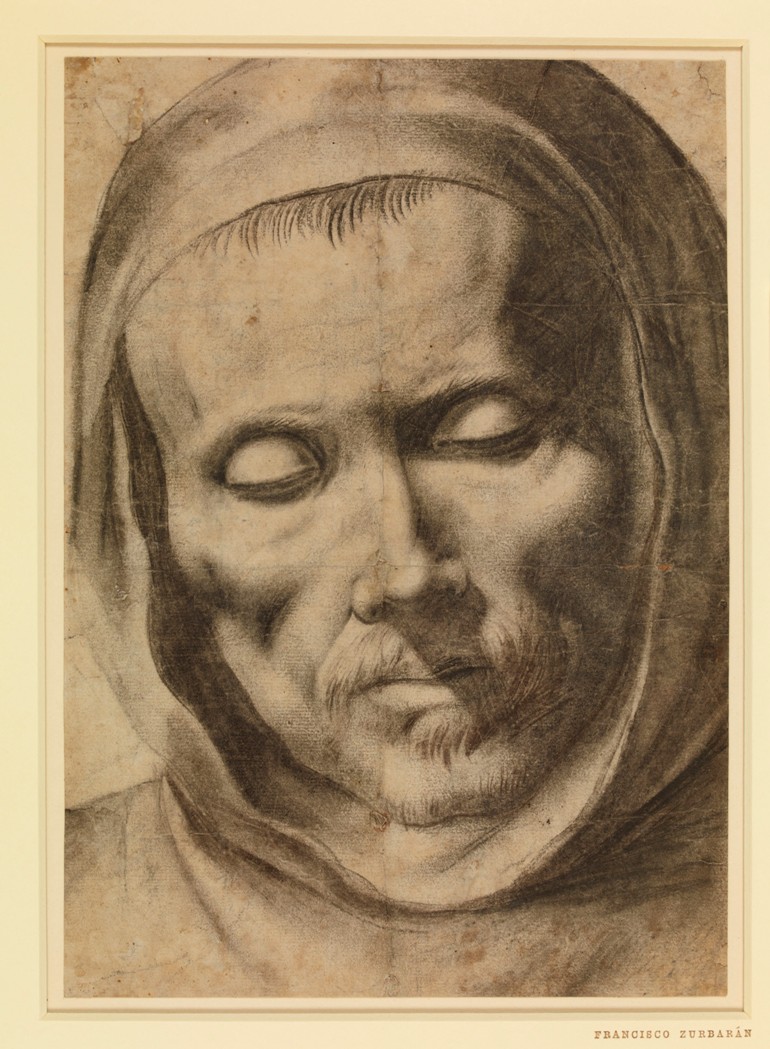 Goya’s masterly prints after Velázquez shows one artist’s admiration and incisive understanding of another. The exhibition also - perhaps inadvertently - points to Goya’s original imagination and vivid emotion, with perhaps some foreshadowing in the flamboyant inventiveness of the religious scenes conjured up by his predecessors. There are several Murillos, mostly of saints, caught up in an intensity of prayer, and looking thoroughly ecstatic; Jose de Ribera who spent much of his working life in Naples when it was part of the Spanish Habsburg empire shows us poets and martyrs, a drunken Silenus, a Prometheus, and a powerfully rhythmic scene of Christ being beaten by a tormentor. Zurbarán’s Head of a Monk (pictured above left), his skin so taut that the skull is almost visible, is a haunting study that hints at the absorbing power of the contemplative life.
Goya’s masterly prints after Velázquez shows one artist’s admiration and incisive understanding of another. The exhibition also - perhaps inadvertently - points to Goya’s original imagination and vivid emotion, with perhaps some foreshadowing in the flamboyant inventiveness of the religious scenes conjured up by his predecessors. There are several Murillos, mostly of saints, caught up in an intensity of prayer, and looking thoroughly ecstatic; Jose de Ribera who spent much of his working life in Naples when it was part of the Spanish Habsburg empire shows us poets and martyrs, a drunken Silenus, a Prometheus, and a powerfully rhythmic scene of Christ being beaten by a tormentor. Zurbarán’s Head of a Monk (pictured above left), his skin so taut that the skull is almost visible, is a haunting study that hints at the absorbing power of the contemplative life.
But perhaps the most revelatory and touching drawing on view features one of our own: Goya’s red chalk drawing (1812 ) of the hollow-faced wide-eyed Wellington, unnervingly staring out at us. Even the iron duke paid a high emotional cost for the victories of the Peninsular wars: a compelling masterpiece.
Click on gallery images below to enlarge.
Explore topics
Share this article
The future of Arts Journalism
You can stop theartsdesk.com closing!
We urgently need financing to survive. Our fundraising drive has thus far raised £49,000 but we need to reach £100,000 or we will be forced to close. Please contribute here: https://gofund.me/c3f6033d
And if you can forward this information to anyone who might assist, we’d be grateful.

Subscribe to theartsdesk.com
Thank you for continuing to read our work on theartsdesk.com. For unlimited access to every article in its entirety, including our archive of more than 15,000 pieces, we're asking for £5 per month or £40 per year. We feel it's a very good deal, and hope you do too.
To take a subscription now simply click here.
And if you're looking for that extra gift for a friend or family member, why not treat them to a theartsdesk.com gift subscription?
more Visual arts
 'We are bowled over!' Thank you for your messages of love and support
Much-appreciated words of commendation from readers and the cultural community
'We are bowled over!' Thank you for your messages of love and support
Much-appreciated words of commendation from readers and the cultural community
 Photo Oxford 2025 review - photography all over the town
At last, a UK festival that takes photography seriously
Photo Oxford 2025 review - photography all over the town
At last, a UK festival that takes photography seriously
![SEX MONEY RACE RELIGION [2016] by Gilbert and George. Installation shot of Gilbert & George 21ST CENTURY PICTURES Hayward Gallery](https://theartsdesk.com/sites/default/files/styles/thumbnail/public/mastimages/Gilbert%20%26%20George_%2021ST%20CENTURY%20PICTURES.%20SEX%20MONEY%20RACE%20RELIGION%20%5B2016%5D.%20Photo_%20Mark%20Blower.%20Courtesy%20of%20the%20Gilbert%20%26%20George%20and%20the%20Hayward%20Gallery._0.jpg?itok=7tVsLyR-) Gilbert & George, 21st Century Pictures, Hayward Gallery review - brash, bright and not so beautiful
The couple's coloured photomontages shout louder than ever, causing sensory overload
Gilbert & George, 21st Century Pictures, Hayward Gallery review - brash, bright and not so beautiful
The couple's coloured photomontages shout louder than ever, causing sensory overload
 Lee Miller, Tate Britain review - an extraordinary career that remains an enigma
Fashion photographer, artist or war reporter; will the real Lee Miller please step forward?
Lee Miller, Tate Britain review - an extraordinary career that remains an enigma
Fashion photographer, artist or war reporter; will the real Lee Miller please step forward?
 Kerry James Marshall: The Histories, Royal Academy review - a triumphant celebration of blackness
Room after room of glorious paintings
Kerry James Marshall: The Histories, Royal Academy review - a triumphant celebration of blackness
Room after room of glorious paintings
 Folkestone Triennial 2025 - landscape, seascape, art lovers' escape
Locally rooted festival brings home many but not all global concerns
Folkestone Triennial 2025 - landscape, seascape, art lovers' escape
Locally rooted festival brings home many but not all global concerns
 Sir Brian Clarke (1953-2025) - a personal tribute
Remembering an artist with a gift for the transcendent
Sir Brian Clarke (1953-2025) - a personal tribute
Remembering an artist with a gift for the transcendent
 Emily Kam Kngwarray, Tate Modern review - glimpses of another world
Pictures that are an affirmation of belonging
Emily Kam Kngwarray, Tate Modern review - glimpses of another world
Pictures that are an affirmation of belonging
 Kiefer / Van Gogh, Royal Academy review - a pairing of opposites
Small scale intensity meets large scale melodrama
Kiefer / Van Gogh, Royal Academy review - a pairing of opposites
Small scale intensity meets large scale melodrama
 Jenny Saville: The Anatomy of Painting, National Portrait Gallery review - a protégé losing her way
A brilliant painter in search of a worthwhile subject
Jenny Saville: The Anatomy of Painting, National Portrait Gallery review - a protégé losing her way
A brilliant painter in search of a worthwhile subject
 Abstract Erotic, Courtauld Gallery review - sculpture that is sensuous, funny and subversive
Testing the boundaries of good taste, and winning
Abstract Erotic, Courtauld Gallery review - sculpture that is sensuous, funny and subversive
Testing the boundaries of good taste, and winning
 Edward Burra, Tate Britain review - watercolour made mainstream
Social satire with a nasty bite
Edward Burra, Tate Britain review - watercolour made mainstream
Social satire with a nasty bite


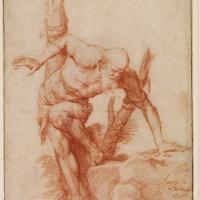
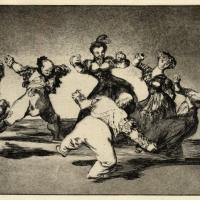

Add comment